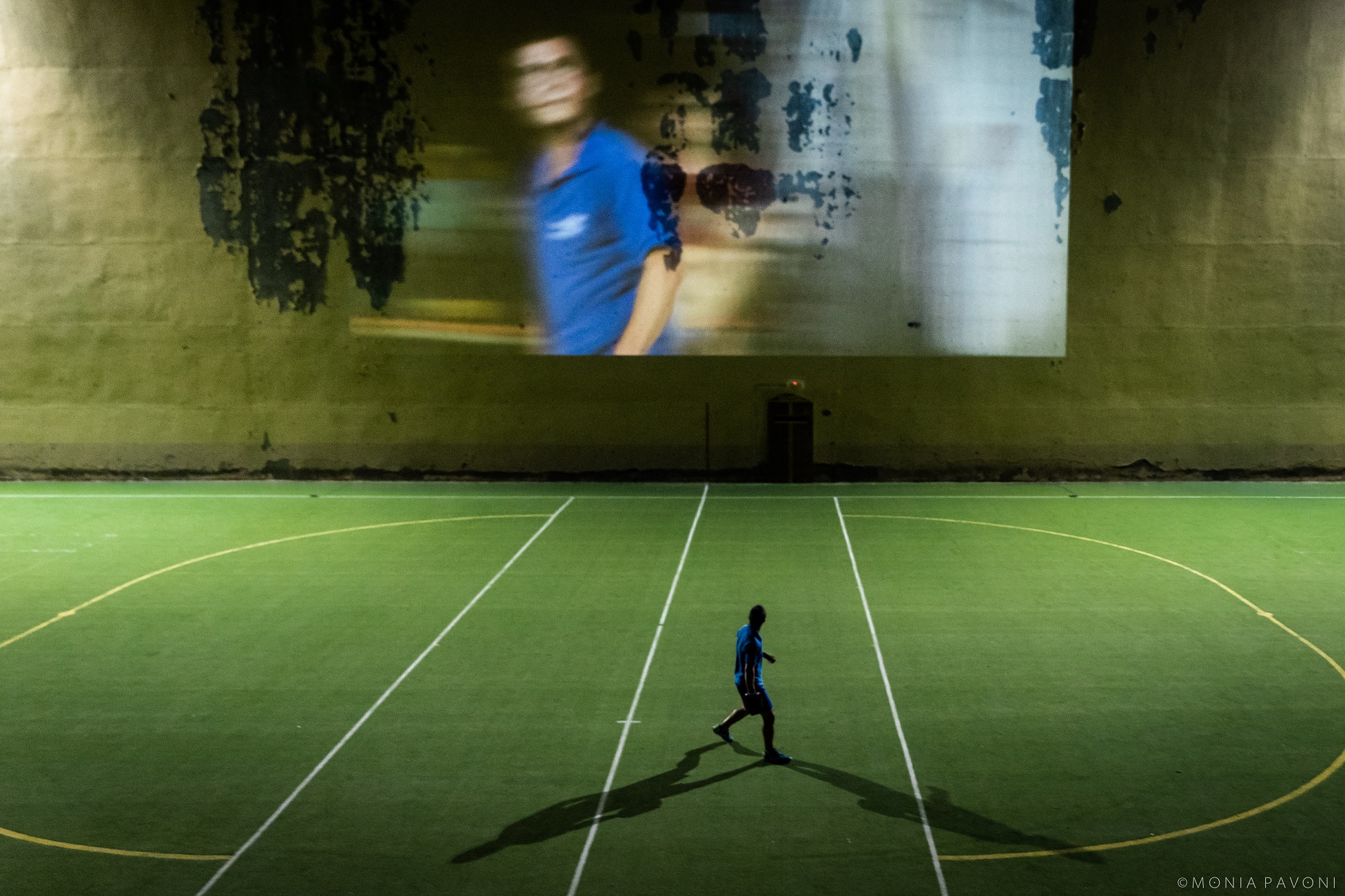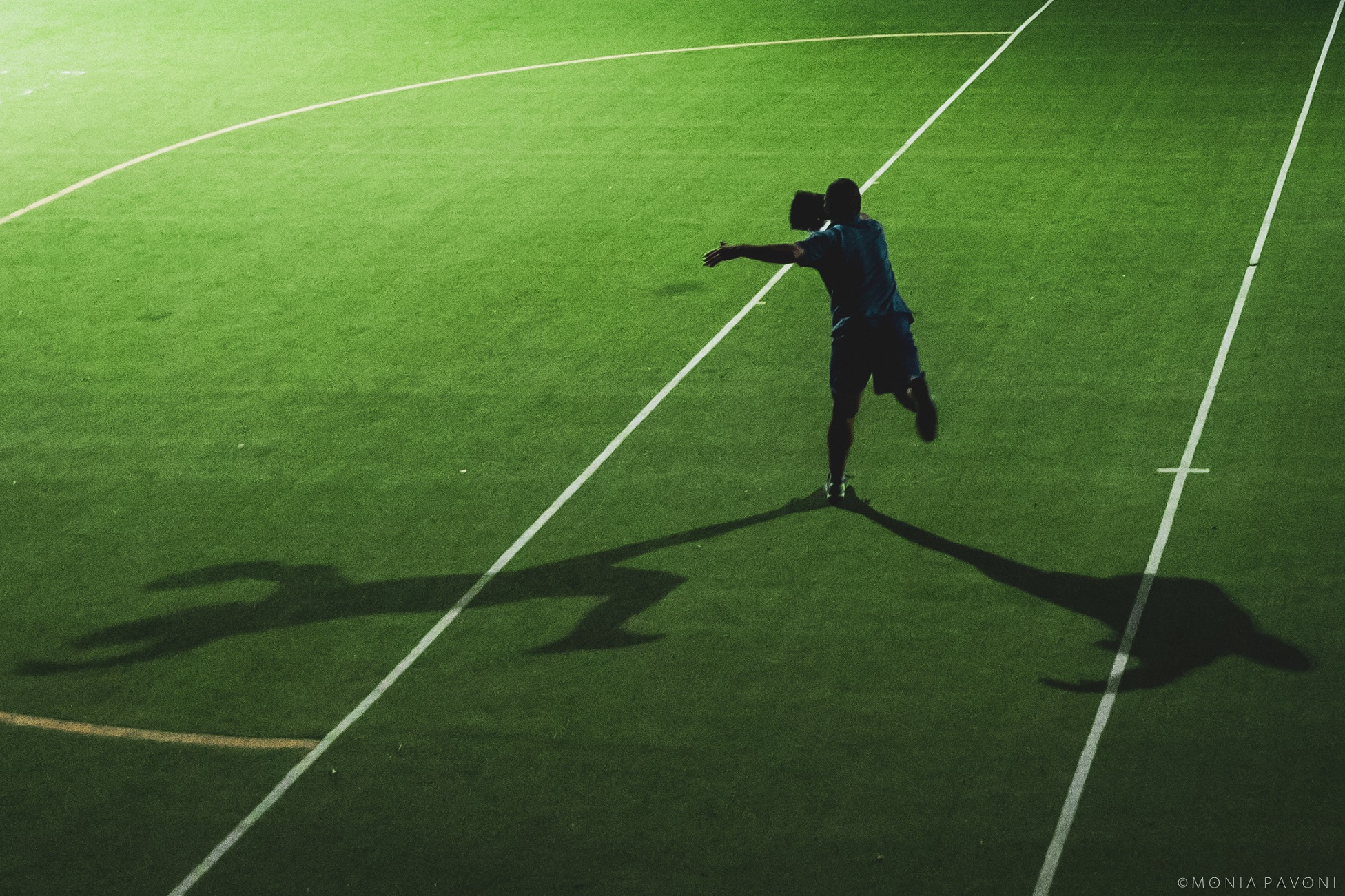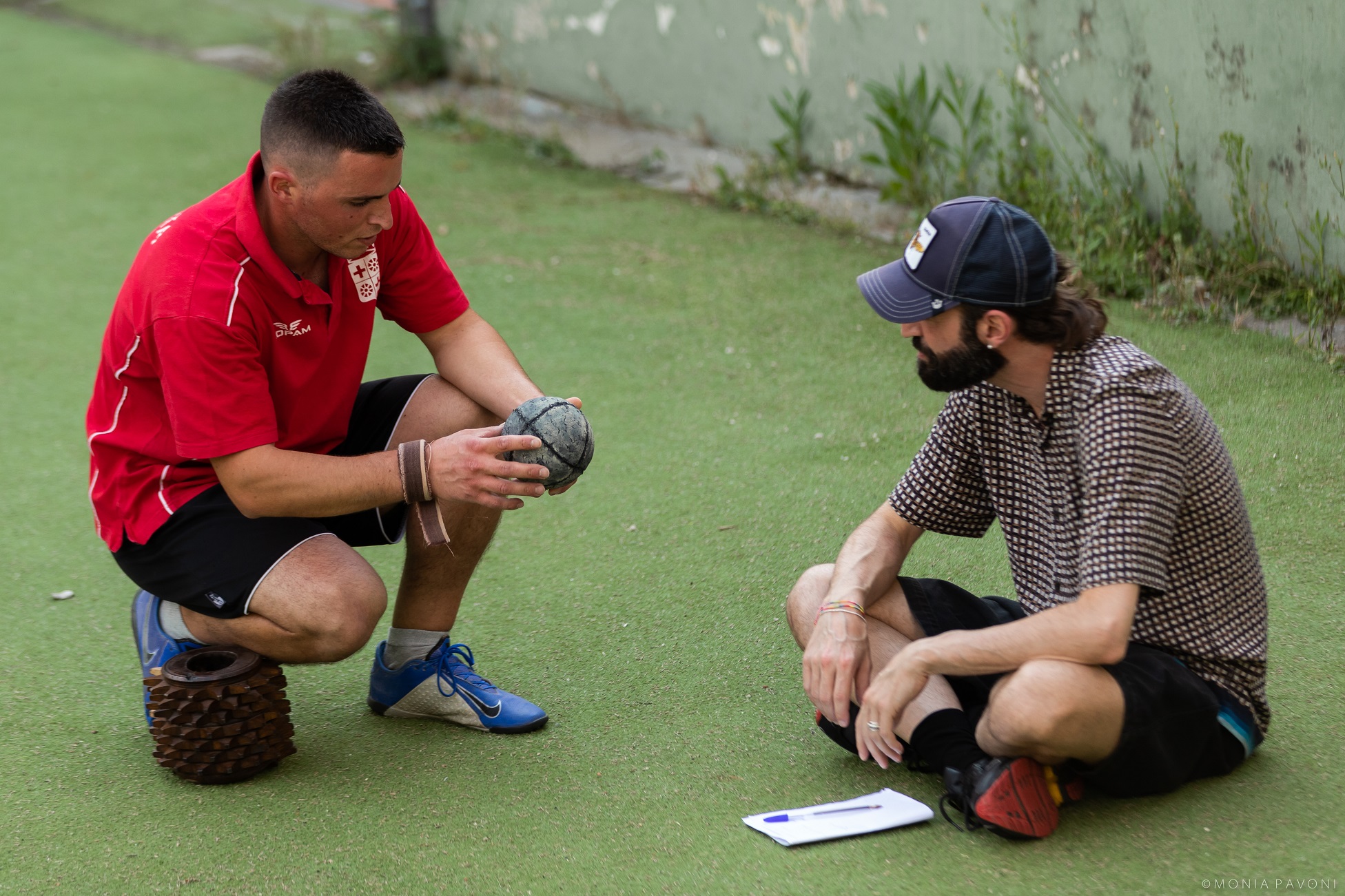Alessandro Sciarroni
PLAY
From an ancient game to a contemporary performative practice
In PLAY, a creation produced by Fabbrica Europa, which originates from the ancient game of the Pallone al bracciale, the Italian artist Alessandro Sciarroni revisits in a contemporary way, through a performance/live video installation, the concepts of time and duration, bringing the performers to measure themselves with dedication, endurance, energy.
The Pallone al Bracciale is a game that was practiced during the Renaissance and that is still played in Italy in special facilities called Sferisteri. The game is based on the players’ ability to control and direct a leather ball with a “bracelet” (bracciale) – a heavy wooden cylinder fitted by pyramid tips that covers the hand – and throw it with precision and vigor from one side to the other of the playing field.
PLAY was presented on September 11, 2021 at the Sferisterio delle Cascine in Florence. In the 80 meters long and 18 meters wide field, a man – a professional player – is alone in this huge space. With the heavy wooden “bracciale”, he relentlessly throws the leather ball against the wall. The lightness and agility in the feet and legs and the strength in the arms create a dynamic movement that becomes almost a dance.
Along the wall, three cameras that capture the details of the effort, of the flow of movements, of the ability to control the mighty blows. The images projected on the high wall let the viewer enter the game, returning the subjective view of the performer.
Microphones pick up and amplify the impact of the ball on the “bracciale”and on the wall, or on the ground. A hard and increasingly loud sound that intertwines with the original sound composition created by Aurora Bauzà and Pere Jou (Telemann Rec.) to accompany the action.
The Pallone al bracciale, an ancient team game, is depicted here in a solitary dimension. A lonely man in a huge space plays his own game. The solitude of a body that challenges its limits and expands the void, filling it with powerful echoes and resonances. A contemporary artistic experience that wants underline the sense of belonging to this centuries-old tradition of a small but active community committed in Florence, as well as in other parts of Italy, to keeping this ancient game, and the spaces in which it is practiced, alive.
Today, only some players are professionals, most of them do other jobs but dedicate their free time to practice this discipline and to teach it to the youngest so that it can be passed down and the community can expand. In fact, there are many families in which the passion for this game passes from father to son.
Born as a purely male game, currently the Pallone al bracciale is also played by girls who are an active part of the community of players in an absolutely inclusive dimension.
The Pallone al bracciale
The Pallone al bracciale has Greek-Roman origins, but it is in the Renaissance period that it has its greatest development. In the 16th century it was practiced by princes, lords and aristocrats, so much so that in some Italian courts there was the “master of balls” who trained those who wanted to play it. In 1555 Antonio Scaino published the Trattato del giuoco della palla (Treatise on the game of the ball) which contained drawings of the wooden “bracelet” used for the game as well as a description of the rules.
The game, initially practiced in the courtyards of noble palaces, then moved to the squares and large open spaces of the streets, played by bourgeois and commoners. However, due to the need for a lateral support wall, the spaces close to the city or castle walls became the most suitable.
At the end of the 1700s and the beginning of the 1800s, with the construction of special facilities (the sferisteri), the organization of matches and the birth of professionalism, the game became a national sport, acquiring fame and popularity. The players were stars loved by the public and the matches of Pallone al bracciale game became like public shows.
Alessandro Sciarroni
Alessandro Sciarroni is an Italian artist active in the field of performing arts with several years of experience in visual arts and theater research. His works are featured in contemporary dance and theater festivals, museums and art galleries as well as in unconventional spaces and involve professionals from different disciplines. In 2019 he was awarded the Golden Lion for Lifetime Achievement in Dance by the Venice Biennial.
His work starts from a conceptual Duchamp-like matrix, making use of a theatrical framework, and he can use some techniques and experiences from dance but also from circus or sport. In addition to the rigor, coherence and clarity of each creation, his work tries to uncover obsessions, fears and fragilities of the act of performing, through the repetition of a practice to the limits of the physical endurance of the interpreters, looking at a different dimension of time, and to an empathic relationship between the audience and the performers.
Alessandro Sciarroni is associated artist at CENTQUATRE-Paris and at Triennale Milano Teatro 2022-2024. His shows are produced by Marche Teatro in collaboration with various national and international coproduction partners depending on the projects. He is artistic director of corpoceleste_C.C.00#.
Players
Luca Gigli, twenty-five years old, comes from Treia in the Marche region. He plays the game of Pallone al bracciale from the age of 12. He discovered the passion for this discipline when he was at the middle school during a school tournament. In 2015 he played and won the first Italian championship, to which three more followed. From 2019 he is in the team of Macerata, carrying on the tradition of this game.
Rodolfo Sorcinelli, born in 1995 in the Marche region, bears the name of one of the great champions of game of Pallone al bracciale of the past. Following in the footsteps of his father, he enters a sferisterio since the first months of life. During the fifth year of the primary school he started practicing this discipline, covering all three roles of the game. Coming from Mondolfo, he lives in Molinella in the province of Bologna, and currently plays for the CS Firenze team.
invention: Alessandro Sciarroni
with Luca Gigli, Rodolfo Sorcinelli
music: Aurora Bauzà e Pere Jou (Telemann Rec.)
project development and production: Maurizia Settembri
lighting design: Valeria Foti
technical direction: Mattia Bagnoli
artistic collaboration: Fabio Novembrini
executive production: esecutiva Alice Chiari
video production: Alfea Cinematografica
video direction: Enrico Re
advisors on Pallone al bracciale: Stefano Sani and Paolo Petruzzi, Club Sportivo Firenze
production: Fondazione Fabbrica Europa with the support of Comune di Firenze
in collaboration with corpoceleste_C.C.00#, Marche Teatro
Download HERE the full dossier
PHOTOGALLERY
cover photo: Francesco Borgatti
photos of the gallery: Monia Pavoni









